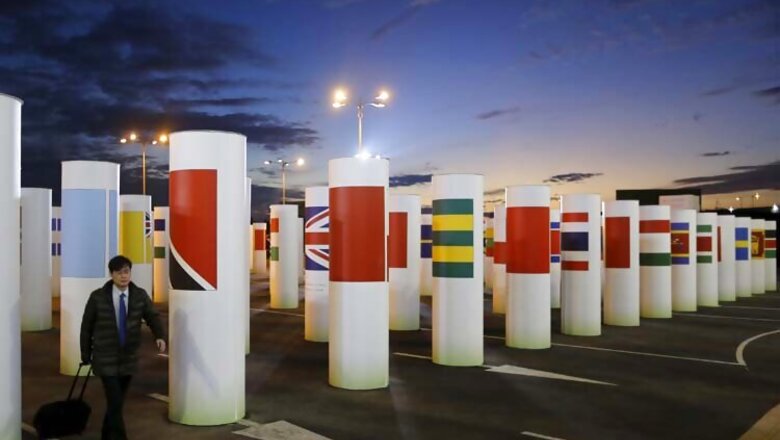
views
In Paris, 196 countries are currently negotiating a new pact to tackle climate change and keep global temperature rise in check, below 2°C by the end of the century. While various countries including India have announced ambitious renewable energy deployment targets along with other actions, there has been a strong call for nations to urgently initiate fossil fuel subsidy reforms, which could generate 12% of the abatement needed to meet 2°C target, as per estimates by the International Energy Agency. While presenting the Fossil Fuel Subsidy Reform (FFSR) Communiqué to United Nations Framework Convention on Climate Change (UNFCCC), Mr John Key, Prime Minister of New Zealand, said that fossil fuel subsidies had driven about a third of the of global carbon emissions between 1980 and 2010.
While the Paris talks focus on countries committing to a bouquet of climate mitigation and adaptation goals, achieving many of these targets would be subject to the availability of finance, both domestic and internationally as well as technology transfer. FFSR on the other hand, if implemented in a targeted and transparent manner, safeguarding the interests of the poor, is a low-hanging fruit in terms of domestic action towards emissions reduction.
India has already initiated reforms by deregulating petrol and diesel prices in 2010 and 2014 respectively. In India, subsidised kerosene is provided in the Public Distribution System (PDS) based on a household allocation system. While, the allocation for kerosene has been gradually reduced over the recent years, it is still widely used, especially in rural areas primarily for lighting purposes. Apart from it being a poor lighting source, few studies also document the adverse health impacts of kerosene use.
Ongoing research on rationalizing kerosene subsidies by the Council on Energy, Environment and Water (CEEW) finds that a key concern of subsidy reform is the potential adverse welfare impacts it could have on the poor. Those in favor of doing away with subsidies altogether reason that a market driven solution would be more effective. On the other hand, while the welfare impact of continuing a subsidy regime is not argued against, the issue is not of subsidies, but rather of subsidising the right alternative, such as solar-based solutions in lieu of kerosene-based lighting. Promoting such alternatives were validated in a recent study released by CEEW, covering over 8,500 households across six of the most energy poor states (Bihar, Jharkand, Madhya Pradesh, Odisha, Uttar Pradesh, West Bengal), where a resounding 78% of rural households expressed a preference for subsidy on solar lanterns in lieu of subsidy on kerosene.
What is the way forward for India? The solution to reforming the kerosene subsidy regime lies in going beyond battling diversion and adulteration, as the associated direct and indirect costs in terms of monitoring are significant and would only add to the fiscal burden. There is an urgent need to design an alternative mechanism that is more effective. For this, the way ahead lies in the answer to the question of whether we have a strong ecosystem to promote alternatives to kerosene – an ecosystem that can cater to millions, while ensuring quality in service delivery.
Aditya Ramji ([email protected]) is a Junior Research Associate at the Council on Energy, Environment and Water, one of India's leading climate and energy think-tanks.




















Comments
0 comment